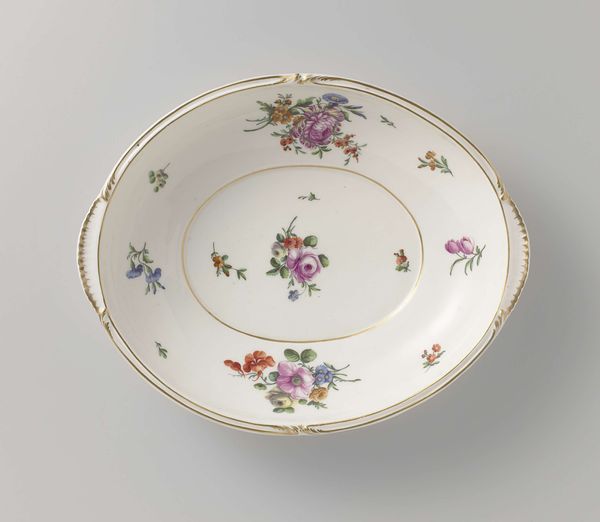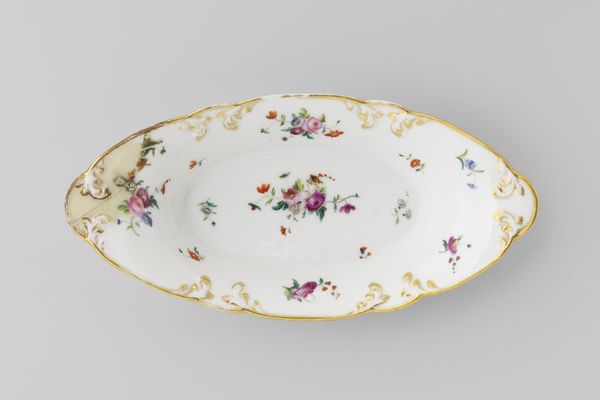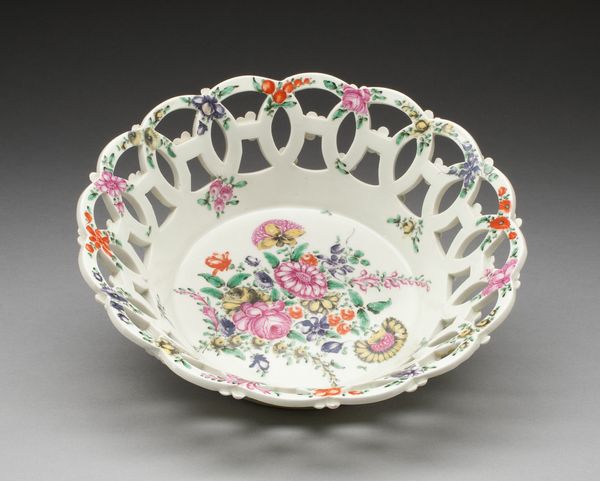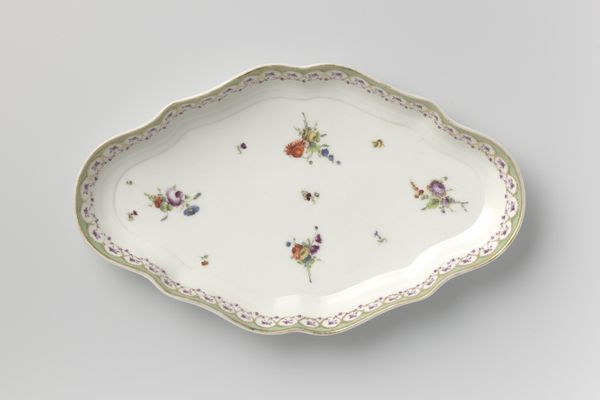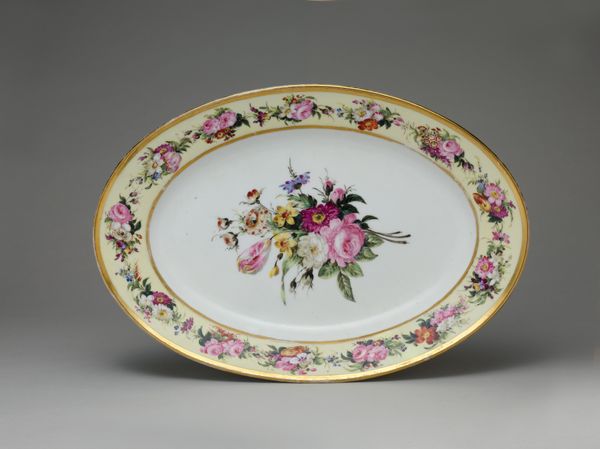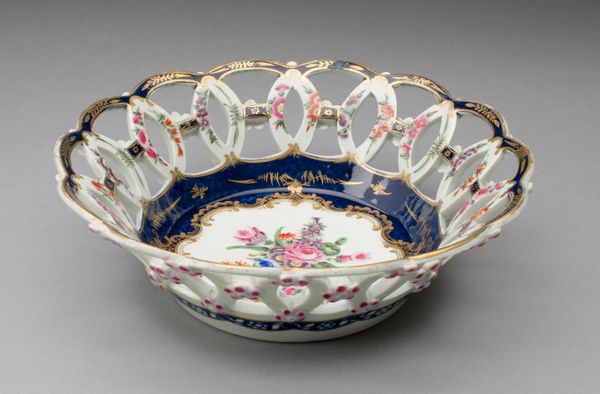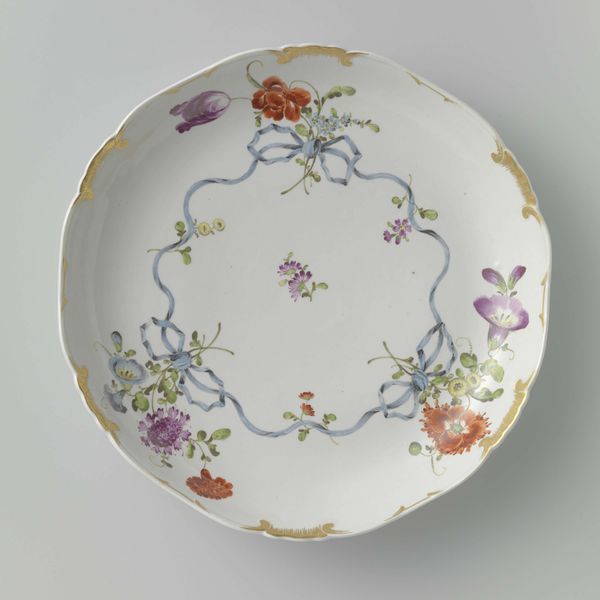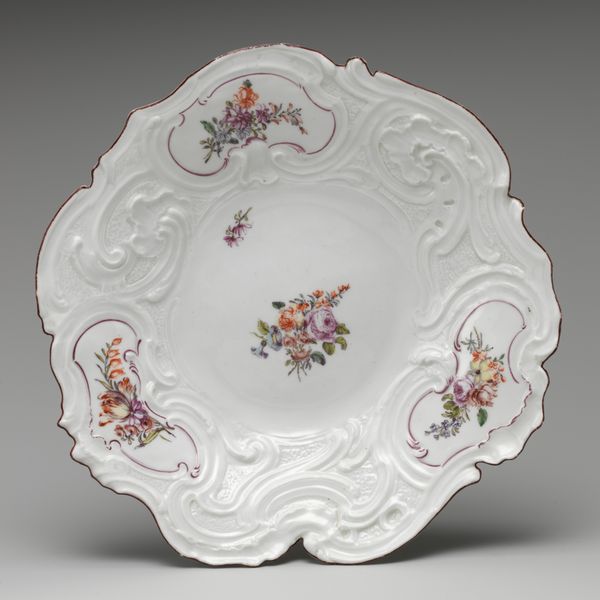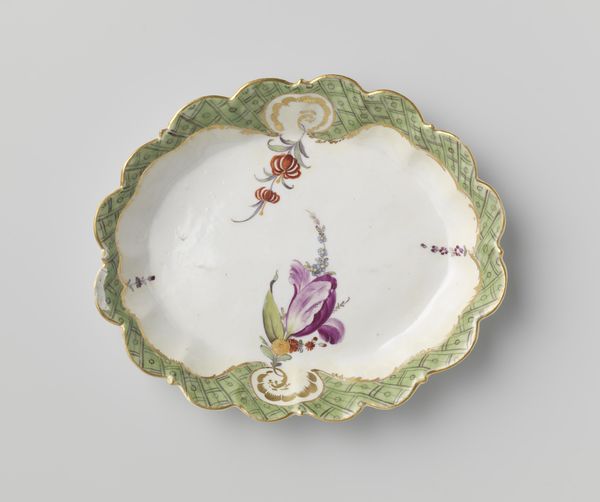
Dimensions: height 6.2 cm, width 34 cm, depth 27 cm
Copyright: Rijks Museum: Open Domain
Editor: Here we have a porcelain “Schaal,” or bowl, crafted around 1780 by Porseleinfabriek Den Haag. The Rococo style, with its delicate floral garlands and gilded edges, strikes me as very elegant, almost excessively so. What social commentary do you think it offers about its time? Curator: I'm drawn to the portrait medallion at its center. Whose image is elevated in this decorative object and what statement does that make? The choice of subject, whether mythological, royal, or otherwise, offers us insight into the aspirations and values of the consumer. Who was meant to enjoy this, and what messages were telegraphed through this ownership? Editor: That's fascinating. I hadn’t considered the consumer’s perspective, beyond thinking about displays of wealth. Does the object’s delicate porcelain material suggest that gender might be an element to explore? Curator: Absolutely! The porcelain material itself can be interpreted through a gendered lens, embodying fragility and refinement often associated with femininity during that era. And, as with many of the decorative arts of the time, colonialism plays a pivotal role: kaolin, the essential ingredient, being primarily sourced through exploitative means. What obligations did fine dining have toward workers' welfare? Editor: So, this bowl serves not just as a pretty object, but a focal point for understanding the complexities of class, gender, and colonialism. Thanks! I'll certainly think twice when encountering porcelain again. Curator: Precisely. These objects speak volumes once we learn to listen critically. This object invites many more crucial inquiries than we have explored today, and our work will have an effect on these objects and their stewards.
Comments
No comments
Be the first to comment and join the conversation on the ultimate creative platform.
